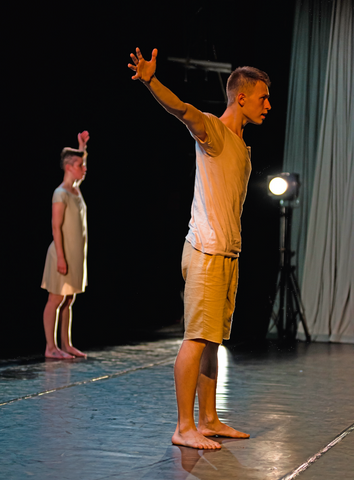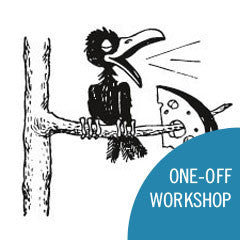
Developing characterisation through voice
£14.95
This scheme is focused on helping young actors to become more versatile. It can be approached as a stand-alone series of classes or may be combined with the author’s complementary scheme on developing characterisation through body language.
There are at least two real benefits for students who can bring a structured approach to playing characters different from their own: they can learn to develop stronger empathy for people who are vocally and behaviourally very different from them; and they can learn to apply knowledge of their own behaviour and communication in everyday life. There is also, of course, the satisfaction of being stretched as a performer.
Any play which requires one actor to play more than one character calls for clear differences in vocal characterisation, to avoid leaving audiences confused. John Godber’s earlier plays such as Bouncers, Shakers and Teechers represent good sources of material for creating multiple character stereotypes. It’s a good idea to work initially on stereotypes, as vocal characteristics can be more obvious, offering a quick way into exploring character voices.
The key to vocal versatility lies in recognising areas in which an actor can be versatile – in other words, knowing what are the changeable characteristics of voice and speech. By ‘voice’ I mean the raw sound
you make when you speak. It has four changeable features: loudness, inflection, note and tone. Speech is the act of turning raw sound into language. It too has four changeable features: pace, accent, diction, and what I call specials. These eight changeable characteristics combine to make a simple mnemonic: LINT PADS.
Learning objectives:
- To enable students to recognise and change their own voice and speech characteristics
- To explore the creation of vocal character as a repeatable process
- To empower students to become more versatile performers
- To recognise reasons why people change their vocal behaviour
- To identify their own voice and speech based on public speaking under pressure
- To suggest their own preferred LINT PADS behaviour
- To demonstrate versatility in the use of vocal loudness, inflection, note and tone
- To collaborate to create a sound play and a jazz performance
- To produce a convincing imaginary dialogue without words
- To show through practical review that they can alter some of the key LINT PADS vocal characteristics effectively
- To demonstrate LINT PADS behaviour, which subverts social role norms
- To demonstrate increasing versatility in the use of LINT PADS when working with different scripts
Number of lessons: 3




